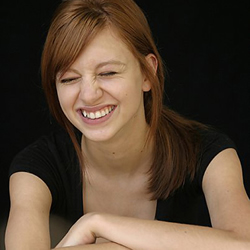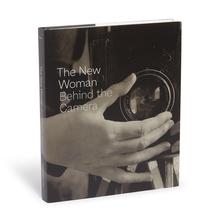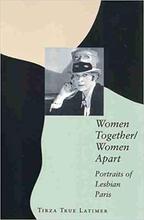More about Claude Cahun
- All
- Info
- Shop
Works by Claude Cahun

Sr. Editor
Revolutionary in both their politics and art, Claude Cahun was a pioneering queer creative who deconstructed the gender binary through strikingly modern self-portraits, and fought against fascism during WWII.
Though Claude Cahun was certainly one of the movers and shakers in the creative circles of pre-war Paris (Surrealist Andre Breton called them “one of the most curious spirits of our time”), Cahun was largely left out of art history textbooks until the 1990s. It was then, after many years of relative obscurity, art historians began to express admiration for Cahun’s work as the precursor to performative photography practices that explore gender presentation, like that of Cindy Sherman, and for being well ahead of its time. Suddenly, museums clamored to collect Cahun’s photographs. David Bowie staged an elaborate exhibition of their work in 2007, and Christian Dior designed a collection inspired by the photographs in 2018.
Born Lucy Schwob, Cahun eventually changed their name in order to reflect their inner feelings of ambiguity when it came to their gender. Though it was of course not common practice to use they/them pronouns in Cahun’s lifetime, as the language surrounding gender identity has evolved significantly in recent years, it is from Cahun’s own writings on their non-binary, perhaps genderfluid identity that some scholars have come to use these pronouns. For example, from Cahun’s autobiography “Disavowels”: “Shuffle the cards. Masculine? Feminine? It depends on the situation. Neuter is the only gender that always suits me.”
Cahun was born in Nantes, France, in 1894 to a family that appreciated arts and culture. Their uncle, Marcel, was a successful Symbolist author, and their grandfather David Leon a famous Orientalist traveler and writer. Fittingly, writing was also a major part of Cahun’s creative practice, along with performance and photography. When Cahun was around 4 years old, their mother began to show signs of mental illness and was permanently institutionalized. Cahun was sent to live with their grandmother and shortly thereafter, following an anti-Semitic incident at school (their paternal lineage was part Jewish), they were shipped off to boarding school in Surrey, England.
On returning to Nantes, Cahun met Suzanne Malherbe (who later adopted the name Marcel Moore), who would become Cahun's lifelong romantic partner and artistic collaborator. In a slightly weird turn of events, Moore also became Cahun’s step-sister after Cahun’s then divorced father remarried to Moore’s widowed mother. (Hey, it worked in “Clueless.”) Moore was an integral part of the creation of Cahun’s most famous photographs, causing some scholars to argue that they should not be seen as self-portraits at all, but rather documentation of collaborative performances. Art historian Tirza True Latimer says of the photos, “They were in the mode of investigation, who you could be, how you could be, projecting yourself into another skin, another universe. These were two lesbians living within certain constraints. The photographs, the acting out, were a way of being free. It wasn’t really about producing an art object.”
Cahun and Moore relocated to Paris and became integral figures in the avant-garde movement, enjoying the company of other radical thinkers and leftists, especially the Surrealists. Cahun was a member of the Association des Écrivains et Artistes Révolutionnaires (Association of Revolutionary Writers and Artists), and published writing about the political potential of Surrealist art and actions. As the rise of fascism became increasingly alarming to Europeans, Cahun further embraced activism as part of their creative practice, co-founding and joining various anti-fascist organizations.
In 1937, Cahun and Moore left the cultural hub of Paris for a quieter life in Jersey, a British island located in the English Channel. They became known to locals as “les mesdames” and garnered attention for their eccentric behavior, like walking their cat on a leash and (gasp!) wearing trousers. This idyllic island existence would be short lived, though, as the Nazis captured Jersey in 1940. Instead of fleeing, Cahun and Moore stayed and set about staging their own resistance.
Jersey was being used for training new recruits, and Cahun and Moore began a campaign to demoralize the young soldiers. They would slip notes into their pockets with Surrealist, anti-fascist poems on them. Cahun, who knew German, would pose as the “soldier with no name,” a fictitious man who had seen battle, writing letters filled with various grievances to the men, claiming the war was lost, and urging them to quit. The pair would also cut up Nazi propaganda posters and fashion them into pro-Ally messages, in a style reminiscent of the political collages of Hannah Höch, which utilized newspapers.
After three years of hiding these notes all over the island for soldiers to find, Cahun and Moore were caught and sentenced to death. Twice they attempted suicide with barbiturates Cahun had stashed, but were unsuccessful. Luckily, a year later, the war ended and they were freed before they could be executed. The time in prison took a toll, though. Cahun died nine years later, at the age of 60. Moore died by suicide 18 years later, and they are buried under a single headstone in Jersey inscribed with two Stars of David and their birth names. They are also commemorated in Paris, where there is now a street named after the pair: Allée Claude-Cahun-Marcel-Moore, in the Montparnasse neighborhood.
Sources
- “Claude Cahun Biography.” The Art Story. Accessed September 9, 2021. https://www.theartstory.org/artist/cahun-claude/life-and-legacy/.
- Latimer, Tirza True. Women Together/Women Apart: Portraits of Lesbian Paris. New Brunswick, NJ: Rutgers University Press, 2005.
- Ryan, Hugh. “This Gender-Nonconforming Anti-Fascist Is the Hero We Deserve.” them. Them., November 16, 2017. https://www.them.us/story/themstory-claude-cahun.
- Treaster, Joseph B. “Overlooked No More: Claude Cahun, Whose Photographs Explored Gender and Sexuality.” The New York Times. The New York Times, June 19, 2019. https://www.nytimes.com/2019/06/19/obituaries/claude-cahun-overlooked.h….
Featured Content
Here is what Wikipedia says about Claude Cahun
Claude Cahun (
French pronunciation: [klod ka.œ̃], born Lucy Renee Mathilde Schwob; 25 October 1894 – 8 December 1954) was a French surrealist photographer, sculptor, and writer.
Schwob adopted the pseudonym Claude Cahun in 1914. Cahun is best known as a writer and self-portraitist, who assumed a variety of performative personae.
In her writing, she consistently referred to herself as elle (she), and this article follows her practice; but she also said that her actual gender was fluid. For example, in Disavowals, Cahun writes: "Masculine? Feminine? It depends on the situation. Neuter is the only gender that always suits me." Cahun is most well known for her androgynous appearance, which challenged the strict gender roles of her time.
During World War II, Cahun was also active as a resistance worker and propagandist. Founding the leftist group Contre Attaque alongside Andre Breton and Batallie; a union of communist writers, artists and workers.
Check out the full Wikipedia article about Claude Cahun













